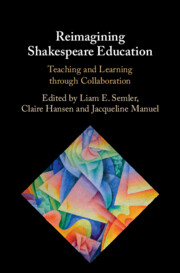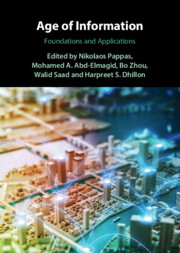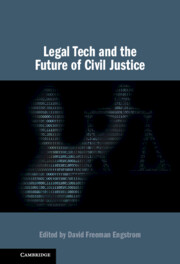Refine search
Actions for selected content:
48202 results in Computer Science
Coevolutionary strategies at the collective level for improved generalism
-
- Journal:
- Data-Centric Engineering / Volume 4 / 2023
- Published online by Cambridge University Press:
- 06 February 2023, e6
-
- Article
-
- You have access
- Open access
- HTML
- Export citation
A rewriting coherence theorem with applications in homotopy type theory
-
- Journal:
- Mathematical Structures in Computer Science / Volume 32 / Issue 7 / August 2022
- Published online by Cambridge University Press:
- 06 February 2023, pp. 982-1014
-
- Article
-
- You have access
- Open access
- HTML
- Export citation
How to do human evaluation: A brief introduction to user studies in NLP
-
- Journal:
- Natural Language Engineering / Volume 29 / Issue 5 / September 2023
- Published online by Cambridge University Press:
- 06 February 2023, pp. 1199-1222
-
- Article
-
- You have access
- Open access
- HTML
- Export citation
Random effects in dynamic network actor models
-
- Journal:
- Network Science / Volume 11 / Issue 2 / June 2023
- Published online by Cambridge University Press:
- 06 February 2023, pp. 249-266
-
- Article
-
- You have access
- Open access
- HTML
- Export citation
On function spaces equipped with Isbell topology and Scott topology
-
- Journal:
- Mathematical Structures in Computer Science / Volume 32 / Issue 8 / September 2022
- Published online by Cambridge University Press:
- 05 February 2023, pp. 1099-1116
-
- Article
- Export citation
Pareto-optimal reinsurance with default risk and solvency regulation
-
- Journal:
- Probability in the Engineering and Informational Sciences / Volume 37 / Issue 2 / April 2023
- Published online by Cambridge University Press:
- 03 February 2023, pp. 518-545
-
- Article
-
- You have access
- Open access
- HTML
- Export citation
Bipartite-ness under smooth conditions
- Part of
-
- Journal:
- Combinatorics, Probability and Computing / Volume 32 / Issue 4 / July 2023
- Published online by Cambridge University Press:
- 03 February 2023, pp. 546-558
-
- Article
- Export citation

Reimagining Shakespeare Education
- Teaching and Learning through Collaboration
-
- Published online:
- 02 February 2023
- Print publication:
- 23 February 2023

Age of Information
- Foundations and Applications
-
- Published online:
- 02 February 2023
- Print publication:
- 09 February 2023

Legal Tech and the Future of Civil Justice
-
- Published online:
- 02 February 2023
- Print publication:
- 09 February 2023
-
- Book
-
- You have access
- Open access
- Export citation
Multiphase segmentation of digital material images
-
- Journal:
- Data-Centric Engineering / Volume 4 / 2023
- Published online by Cambridge University Press:
- 02 February 2023, e5
-
- Article
-
- You have access
- Open access
- HTML
- Export citation
Monotonicity in undirected networks
-
- Journal:
- Network Science / Volume 11 / Issue 3 / September 2023
- Published online by Cambridge University Press:
- 02 February 2023, pp. 351-373
-
- Article
-
- You have access
- Open access
- HTML
- Export citation
Graph transformation in engineering design: an overview of the last decade
-
- Article
-
- You have access
- Open access
- HTML
- Export citation
Preface for the special issue in homage to Martin Hofmann Part 2
-
- Journal:
- Mathematical Structures in Computer Science / Volume 32 / Issue 6 / June 2022
- Published online by Cambridge University Press:
- 02 February 2023, pp. 682-684
-
- Article
-
- You have access
- HTML
- Export citation
NLP startup funding in 2022
-
- Journal:
- Natural Language Engineering / Volume 29 / Issue 1 / January 2023
- Published online by Cambridge University Press:
- 31 January 2023, pp. 162-176
-
- Article
-
- You have access
- Open access
- HTML
- Export citation
Editorial: Socially engaged sound practices, part 2
-
- Journal:
- Organised Sound / Volume 28 / Issue 1 / April 2023
- Published online by Cambridge University Press:
- 30 January 2023, pp. 1-2
- Print publication:
- April 2023
-
- Article
-
- You have access
- HTML
- Export citation













































